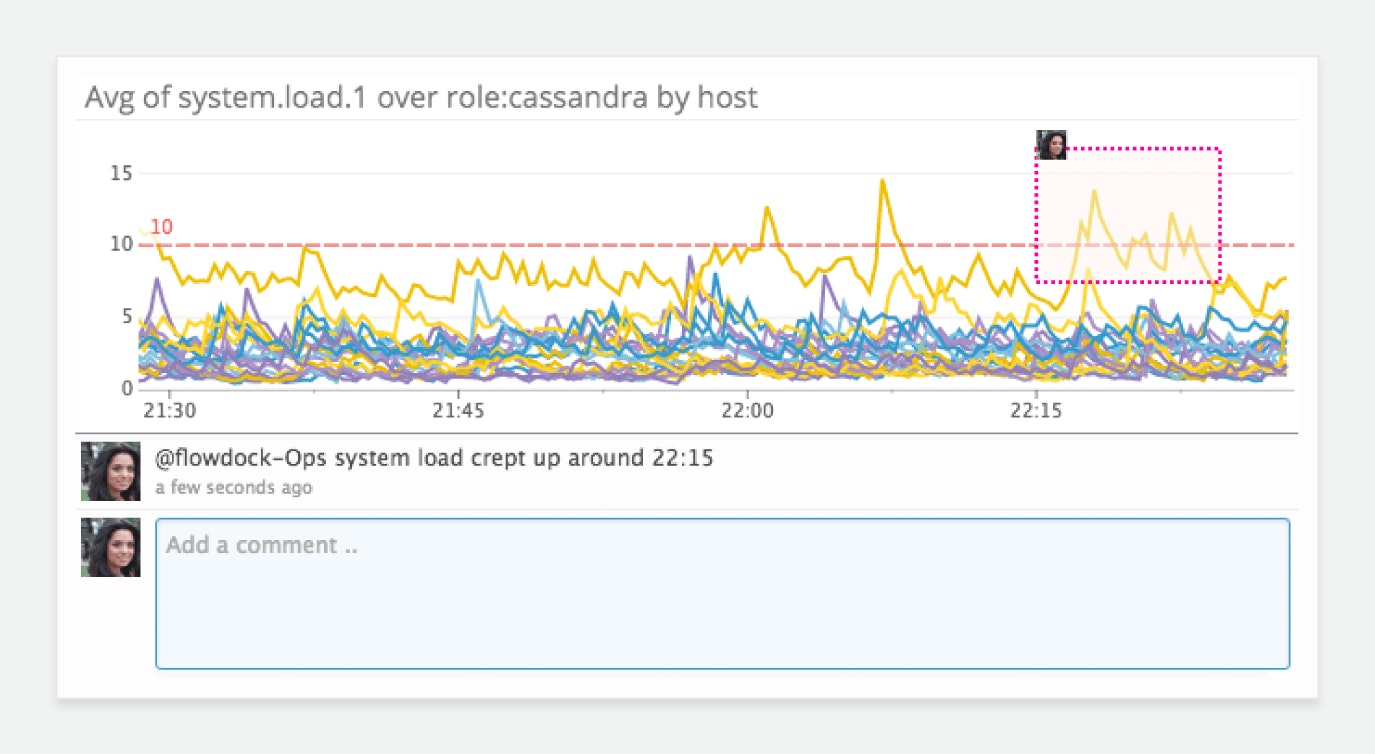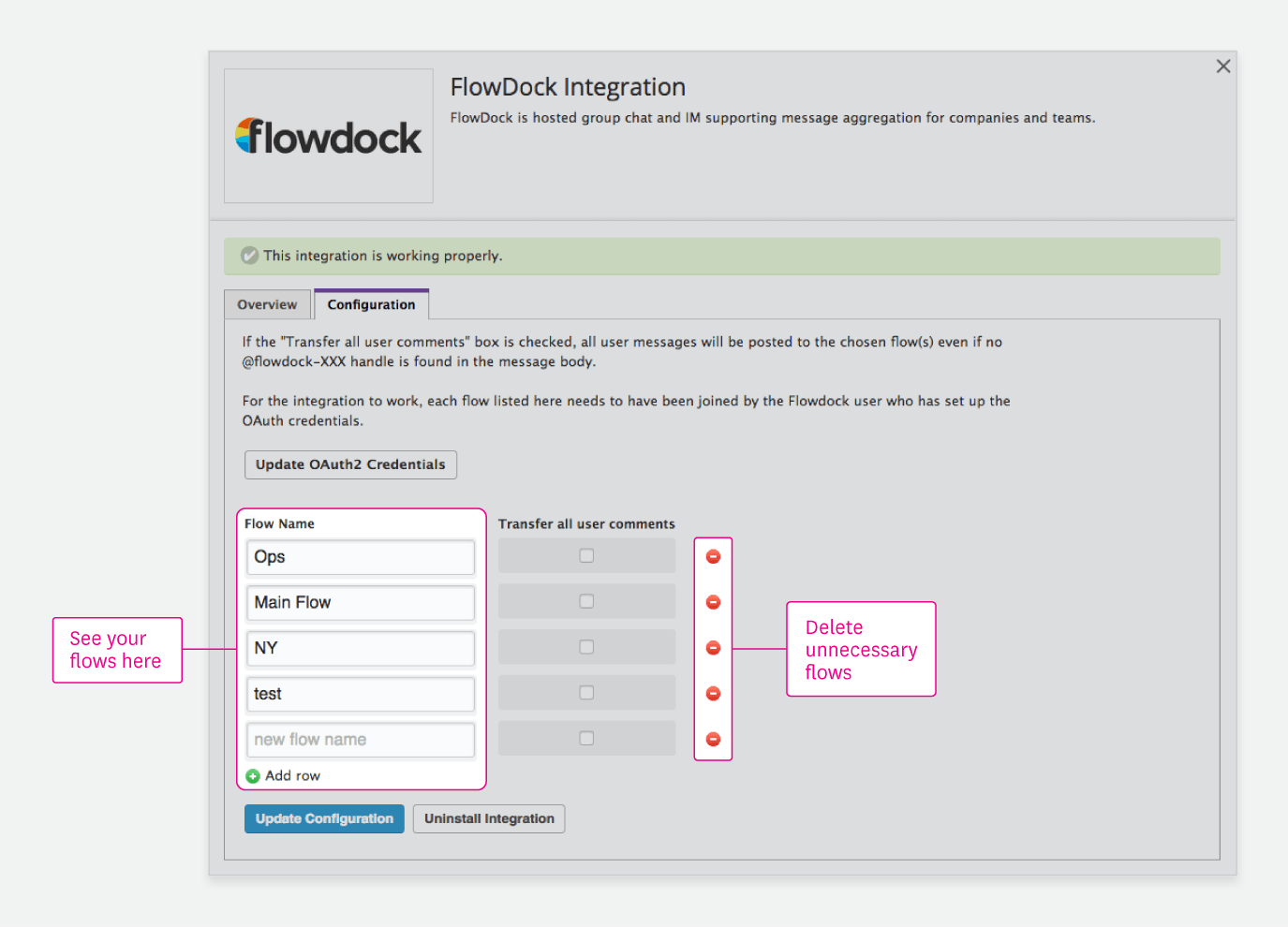
Abril Loya McCloud
Communication within and across technical teams is key to maintaining infrastructure health, but it can suffer in the face of performance issue emergencies if your team doesn’t have the proper tools. Enter Flowdock, which when integrated with Datadog, allows you to automatically receive alerts, integration statuses, and more directly into your flows so your team can begin problem solving quickly.
Discuss what’s happening as it’s happening
Once you start using this integration you won’t need to check your email for every update from your team or alert from Datadog—you can see the alert notifications populate directly into Flowdock as they are triggered.
Related alerts from Datadog are compiled into their own Flowdock thread within your main flow so that your main flow remains uncluttered and conducive to discussion. You can also manually post into your flows from within the Datadog app by tagging @flowdock-mention to point out any service anomalies you may find during your investigation.

Flowdock + Datadog
The volley of emails back and forth can often impact ops teams’ ability to get to the bottom of service failures quickly. With many people and many emails, it was difficult to keep track of where the conversation was going. This is where Flowdock shines: its superior processing and its ability to keep related conversations within the same “thread” so you don’t lose time looking for previous comments.
Flowdock also allows you to take advantage of Datadog’s automatic outlier detection. With these outlier alerts automatically appearing within the same flow as the conversation, teams are able to pinpoint issues efficiently in a single thread while keeping alerting noise to a minimum.
Get Started
Setting up the Flowdock integration takes just a few minutes. All you need to do is go to the Flowdock tile in your integrations tab within the Datadog app and click on ‘Configuration.’

Then, enter your Flowdock credentials and your opened flows will be fetched automatically. You can delete any flows you do not want to be able to post into or from Datadog by clicking the red minus button on the right of the flow name.
If you’re already a Datadog customer, you can go here to set up the Flowdock integration today. Otherwise, you can start a Datadog trial and centralize your communication about performance and infrastructure immediately.





